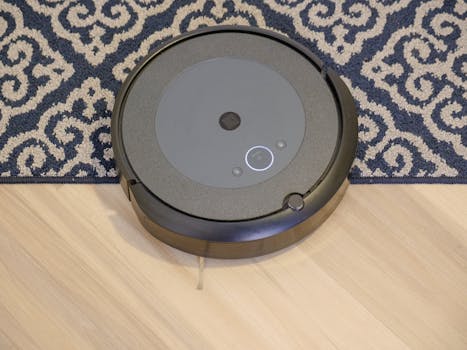
Smart Homes and Smart Living: The Technological Transformation of European Homes by 2025
Smart Homes and Smart Living is revolutionizing the way we live, work, and interact with our living spaces. The European home is on the cusp of a significant transformation, driven by advancements in technology and changing lifestyles. By 2025, smart homes and smart living will become the norm, offering unparalleled convenience, efficiency, and sustainability.
Introduction to Smart Homes and Smart Living
Smart homes and smart living refer to the integration of technology and automation in residential buildings to create a more comfortable, convenient, and sustainable living environment. This concept has been gaining traction in recent years, driven by the increasing availability of smart devices, the Internet of Things (IoT), and advancements in artificial intelligence (AI).
The Benefits of Smart Homes and Smart Living
The benefits of smart homes and smart living are numerous and significant. Some of the most notable advantages include:
- Enhanced convenience: Smart homes and smart living enable residents to control various aspects of their living space remotely, using smartphones or voice assistants.
- Increased efficiency: Smart homes and smart living can optimize energy consumption, water usage, and waste management, reducing the environmental impact of residential buildings.
- Improved safety and security: Smart homes and smart living can integrate advanced security systems, including motion detectors, surveillance cameras, and alarm systems.
- Enhanced sustainability: Smart homes and smart living can promote sustainable living practices, such as energy-efficient lighting, solar power, and rainwater harvesting.
The Technological Transformation of European Homes
By 2025, European homes will undergo a significant technological transformation, driven by advancements in IoT, AI, and data analytics. Some of the key trends that will shape the future of smart homes and smart living in Europe include:
- Increased adoption of smart speakers and voice assistants
- Growing demand for energy-efficient and sustainable living solutions
- Integration of advanced security systems and biometric authentication
- Expansion of smart home devices and appliances, including thermostats, lighting systems, and home entertainment systems
Case Studies: Smart Homes and Smart Living in Europe
Several European countries are already embracing smart homes and smart living, with notable examples including:
- Germany’s Smart Home Initiative, which aims to create a network of smart homes and smart living spaces across the country
- The UK’s Smart Home Alliance, which brings together industry stakeholders to promote the development and adoption of smart home technologies
- France’s Smart City Initiative, which focuses on creating sustainable and energy-efficient urban environments
Conclusion
In conclusion, the European home is on the cusp of a significant transformation, driven by advancements in technology and changing lifestyles. By 2025, smart homes and smart living will become the norm, offering unparalleled convenience, efficiency, and sustainability. As the smart home market continues to evolve, it is essential for industry stakeholders, policymakers, and consumers to work together to create a future where technology enhances the living experience, while promoting sustainability and social responsibility.
Recommendations for the Future of Smart Homes and Smart Living
To ensure a successful transition to smart homes and smart living, we recommend the following:
- Investing in education and awareness-raising initiatives to promote the benefits and opportunities of smart homes and smart living
- Developing and implementing standardized protocols and regulations for the smart home industry
- Encouraging collaboration and innovation among industry stakeholders, startups, and research institutions
- Promoting sustainable and energy-efficient practices in smart home design and development
The Future of Smart Homes and Smart Living: Trends and Predictions
As we look to the future, several trends and predictions will shape the smart home market, including:
- Increased focus on artificial intelligence and machine learning in smart home systems
- Growing demand for voice-controlled and gesture-controlled interfaces
- Expansion of smart home devices and appliances to include more niche products, such as smart gardening systems and smart pet feeders
- Integration of smart home technologies with wearable devices and personal health monitors
Smart Homes and Smart Living: The Impact on European Society
The impact of smart homes and smart living on European society will be significant, with potential benefits including:
- Improved quality of life for residents, particularly the elderly and those with disabilities
- Increased energy efficiency and reduced greenhouse gas emissions
- Enhanced public health and well-being through the integration of health monitoring systems and telemedicine platforms
- New opportunities for economic growth and job creation in the smart home industry
Challenges and Limitations of Smart Homes and Smart Living
While smart homes and smart living offer numerous benefits, there are also several challenges and limitations to consider, including:
- High upfront costs and investment requirements
- Concerns over data privacy and cybersecurity
- Potential for technological obsolescence and compatibility issues
- Need for standardized protocols and regulations to ensure interoperability and safety
Conclusion and Future Directions
In conclusion, smart homes and smart living are revolutionizing the way we live, work, and interact with our living spaces. As the European home undergoes a significant technological transformation, it is essential to address the challenges and limitations of smart homes and smart living, while promoting the benefits and opportunities of this emerging market. Future directions for research and development should focus on creating more sustainable, efficient, and user-friendly smart home systems, while ensuring the privacy, security, and well-being of residents.
Final Thoughts: Smart Homes and Smart Living in 2025
By 2025, smart homes and smart living will have transformed the European residential landscape, offering unparalleled convenience, efficiency, and sustainability. As we look to the future, it is essential to continue innovating and improving smart home technologies, while addressing the challenges and limitations of this emerging market. With the right approach, smart homes and smart living can create a better future for European residents, while promoting economic growth, social responsibility, and environmental sustainability.






